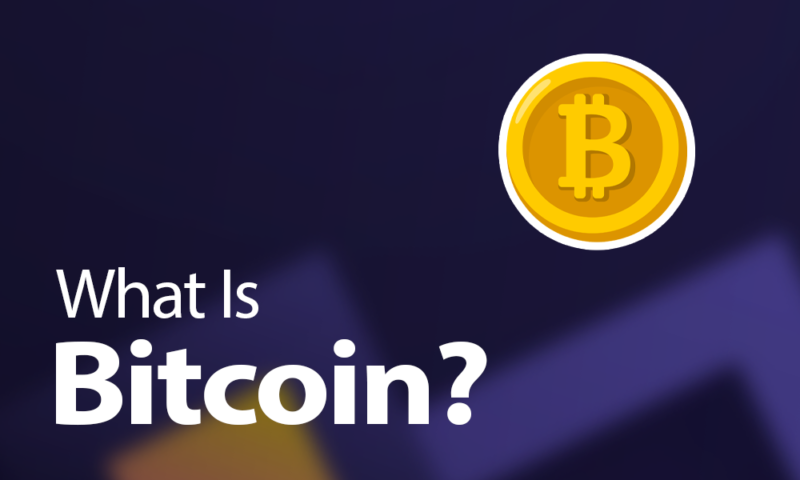What Is Bitcoin? A Quick Starter Guide in 2024
The cryptocurrency that started the crypto craze, bitcoin is the most well-known form of digital money. Despite making headlines around the world, how bitcoin works is still a mystery to a lot of people. If you’re one of those people, read on for an answer to the age-old question “What is bitcoin, and how does it work?”
With the recent onslaught of high-profile ransomware attacks, cryptocurrencies have come under the spotlight for all the wrong reasons. Even if you don’t fully understand them, you’ve probably at least heard of bitcoin (and if you follow a certain billionaire on Twitter, you’ve heard of dogecoin as well). So the average Joe who is not deep in the crypto-tech world might be wondering, “What is bitcoin, really?”
Key Takeaways:
- Bitcoin is a form of an encrypted virtual currency called “cryptocurrency,” and you can use bitcoins to buy goods and services from vendors that accept it.
- Based on blockchain technology, bitcoin is secure, anonymous and (theoretically) impossible to cheat.
- The process of creating bitcoins is called mining, though with bitcoin’s current value, mining is only lucrative for large crypto-mining farms.
- One frequent criticism of cryptocurrencies is the fear that they can be used for illegal activity, such as purchasing weapons on the dark web. It’s not surprising that crypto is illegal in some countries like China.
- Another is that they’re easy prey for market speculation, letting the rich get richer just by buying in.
Bitcoin (and cryptocurrency, in general) might be a bit of a mystery for most, but we’ll do our best to explain all the important concepts. We’ll talk about the general bitcoin system, bitcoin mining, how bitcoin transactions work and more esoteric topics, like if bitcoins are even real money. Keep reading for all the details on the digital currency that started the crypto craze.
What Is Bitcoin? Is It Real Money?
Bitcoin is a cryptocurrency, which is a virtual form of real currency. Though you can use it to buy products and services from a number of vendors — just like you can with real money — the way it’s traded and sold makes it more of a commodity in and of itself.
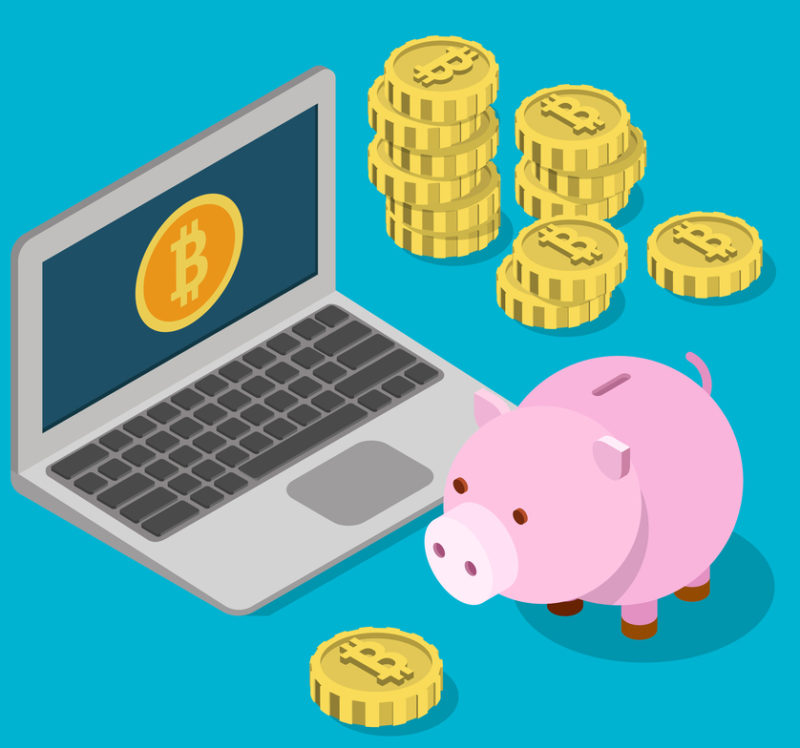
However, bitcoin is making major strides in Latin American countries. The government of El Salvador has already passed laws to make bitcoin a “legal tender” and put it under its financial system. This will put bitcoin on more equal footing with other conventional fiat currencies. More countries, including Paraguay, Mexico and Venezuela, are preparing similar legislation.
Understanding Cryptocurrency & the Blockchain
Cryptocurrencies are completely digital money that you should be able to exchange for goods and services purchased online. For example, several of the best VPN providers allow you to pay for services with bitcoin and other cryptocurrencies.
Besides bitcoin, there are other virtual currencies like dogecoin, ethereum and litecoin, to name but three of many. How you use them is simple: they work just like traditional currencies. People keep their bitcoin in bitcoin wallets and use those digital wallets like a credit card.
What makes cryptocurrencies different is that they’re more secure than other currencies, thanks to being based on encryption and a complex validation system called a “blockchain.”
When you send bitcoins from your crypto wallet to another person, that transaction gets included in a public list of transactions: the blockchain. Everyone who uses bitcoin has a copy of that list, making it impossible to fake, duplicate or forge transactions.
The blockchain is a decentralized system (unlike CBDC), which means there’s no central bank that controls bitcoin or any other virtual currency. It’s all in the hands of bitcoin holders. This makes the currency immune to manipulation by any central authority or government. However, there are still ways that cryptocurrencies can be manipulated, and we’ll touch upon that later in this article.
A Crash Course in Blockchain Technology
That’s the easy part of understanding cryptocurrencies. The underlying technology is a bit more difficult to grasp.
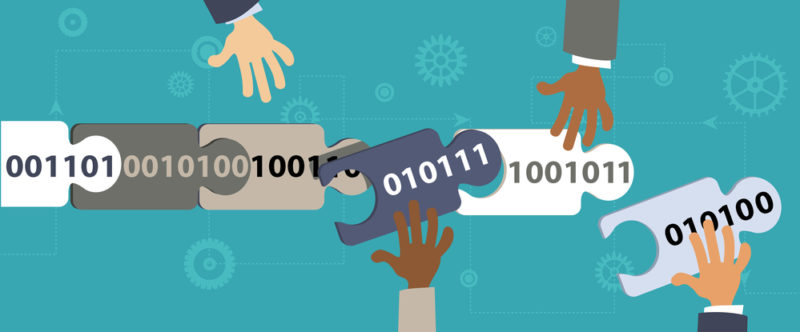
The best way to look at a blockchain is, unsurprisingly, as a chain of blocks. Each of these blocks represents a list of transactions and consists of three parts:
- The block’s data (the list of transactions that the block represents)
- The block’s hash (the encrypted form of its data)
- The hash of the block directly preceding it
The data on a block is just a record of several transactions that look something like this: “person A gives 10 bitcoins to person B.” This data is then run through a cipher to encrypt it, generating an encrypted hash (this relates to how mining works, so remember this bit). When you append the hash of the block preceding it to this data, you create a block.
Each block in the chain is then entered into a blockchain ledger, and everyone using the blockchain has a copy of that ledger. The very first block in the chain is called the “genesis block,” and it’s unique in that it has no preceding block, so it only has its own hash and data.
What Makes the Blockchain Secure?
If you change any data on a block, it automatically changes the block’s hash, which will then affect the next block that contains the previous block’s hash. This affects the next block, and so on. So, to hack the blockchain, you would have to change every single block that comes after it in the blockchain, and you would have to do this before the ledger gets updated.
To make sure this is nearly impossible to do, the bitcoin blockchain uses a feature that the bitcoin technical paper calls “proof of work.” This essentially forces your computer to run a large number of difficult computations (which takes quite some time) to make a change to a single block.
Another thing that makes this system so secure is its decentralized nature. Every person participating in the blockchain (or miner) is connected to every other miner in a peer-to-peer network. Thanks to the wonders of encryption, everyone is anonymous, too. Learn more in our “is crypto anonymous” guide.
To make any sort of change to a block, like duplicating a transaction, every person in the chain needs to confirm that change and input it into their ledgers; thus, ensuring the integrity of the blockchain.
How Bitcoin Transactions Work
If you want to make a transaction using your bitcoin wallet, you transmit that information simultaneously to all miners in the bitcoin network (don’t worry, we’ll explain what bitcoin mining is in the next section). As we established, the miners then have to confirm that information and make the change in their ledgers.
This ensures you can’t cheat the system and add more bitcoins to your wallet by faking or doubling a bitcoin transaction.
How Does Bitcoin Mining Work?
We mentioned encryption when we talked about how to create a block in the blockchain. How mining bitcoin works is that each computer on the network listens for incoming transactions and compiles them into a list in an attempt to create a block.
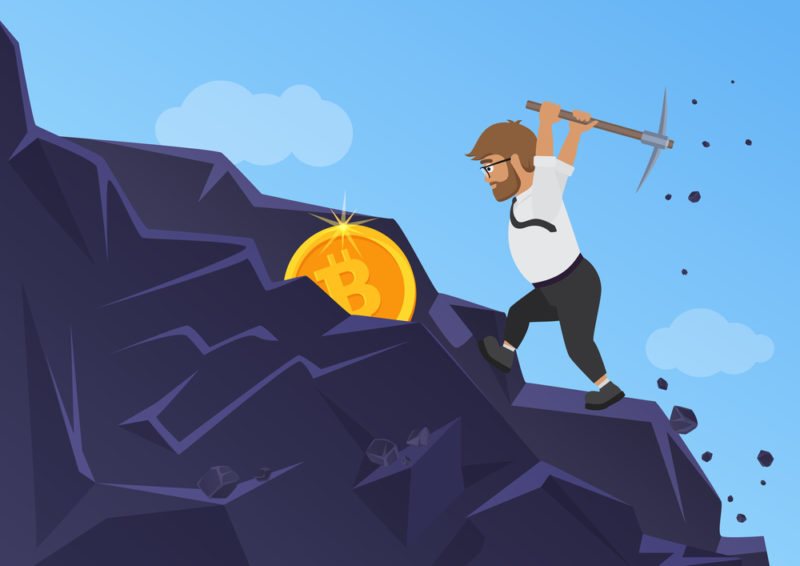
To create a block, you need to calculate a hash out of the transaction list by encrypting it, but it can’t just be any hash. The bitcoin network uses a special version of the cipher called SHA-256 for encryption, and this cipher creates a different hash each time you run data through it — even if the data is the same.
In order to be allowed to add the block to the blockchain, the hash you calculate has to fulfill several requirements (this is the proof of work we mentioned), and it can take millions, even billions of tries. In fact, Satoshi Nakamoto — the man who invented bitcoin — took over two billion attempts to create the very first block.
When you finally find a hash that meets the proof-of-work requirements, the block you’ve created gets added to the blockchain and you’re rewarded with an amount of bitcoin. That’s how new bitcoins are created. The more blocks you add to the chain, the more bitcoins you get.
How Bitcoin Miners Make Money
We already explained that to get bitcoin, your computer needs to create a block by encrypting some data. However, if someone calculates a hash for that block before you do, and they beat you to creating that block, you get nothing. This is why you need a tremendous amount of computing power to generate blocks faster and beat out the competition.
It also means there’s an upfront investment in powerful mining hardware, as well as the cost of the electricity needed to power that hardware.
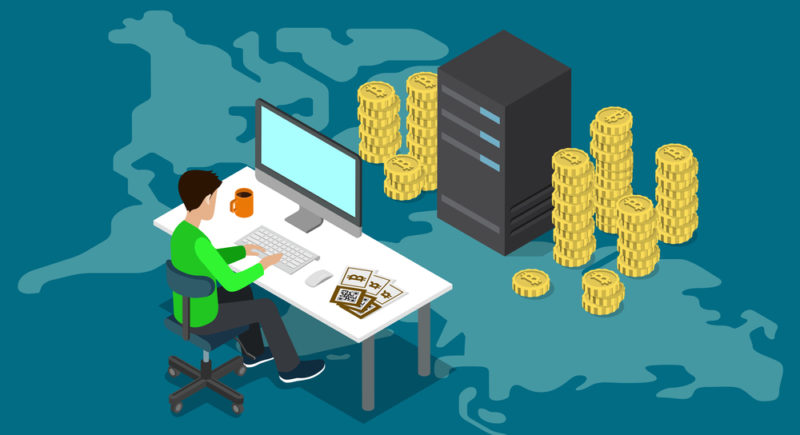
However, that’s not the only thing to consider. There can only be around 21 million bitcoins in the world, which means that the more bitcoins there are currently in circulation, the harder it is to mine them.
With around 18.5 million bitcoins mined so far, it’s already come to a point where an individual miner just can’t justify the hardware and electricity costs, and bitcoin mining is now mostly done by larger bitcoin farms (or those with deeper pockets).
That’s why there’s currently a gold rush toward any new promising cryptocurrency that’s still possible for individuals to mine. You can still sell and buy bitcoins (read our guides on how to buy bitcoin and how to sell bitcoin), but mining it requires a significant investment.
A Brief History of Bitcoin
Bitcoin’s greatest success was solving one very important riddle: what prevents cybercriminals from accessing your database and making off with your currency? Or, worse yet, stealing the code and basically creating as much as they want, turning your hard work into so many more worthless bits and bytes?
The person who figured it out goes by the pseudonym Satoshi Nakamoto, and that’s pretty much all we know about him. He created the first bitcoin in January 2009 and used the name “Satoshi Nakamoto” on the technical paper. Nakomoto’s big invention was the form of blockchain technology that we described earlier.
The complex system of verifications made “double-spending” — spending a bitcoin twice by exploiting the code — impossible. His code also allowed users to mine bitcoin, simultaneously keeping the blockchain secure and “minting” new coins — hitting two birds with one stone.
Maybe we should note here that once the first “block” of around one million bitcoins was mined, Nakomoto disappeared, never to be heard from again. He left it to his supporters to mine the next few million bitcoin, and then things really took off. Currently, Nakomoto, whoever he is, is sitting on a pile worth billions.
How Much Is Bitcoin Worth?
As is the case with most cryptocurrencies, bitcoin’s price is volatile and changes day by day. At the time of writing, one bitcoin is worth around $40,000, but the highest it’s ever gotten was nearly $65,000 in April 2021. There’s currently around $740 billion worth of bitcoins in circulation globally.
The Dangers of Bitcoin
Again, the blockchain anonymizes transactions via encryption, so no one in the chain knows where transactions come from, just that they happen between anonymous persons. This makes bitcoin and other cryptocurrencies perfect for shady deals and illicit transactions, especially on dark web marketplaces.
As an example, ransomware attacks usually rely on cryptocurrency transactions for ransom, including the one on the Colonial oil pipeline.
To reduce the potential for illegal cryptocurrency deals, lawmakers in South Korea made it mandatory to disclose your identity whenever you trade bitcoins. No such laws exist yet in other countries, though.
However, this argument doesn’t hold much. In fact, of all cryptocurrency transactions, only around 0.34 percent involved illicit activities in 2020.
How Billionaires Can Manipulate the Value of Bitcoin
Another point of criticism is just how easy it is for large corporations and billionaires to manipulate a cryptocurrency’s market value.
We’ll use Elon Musk to illustrate this. In January 2021, his company, Tesla, caused a surge in the price of bitcoins and other cryptocurrencies when it bought $1.5 billion worth of bitcoins. Then, in May 2021, a single tweet by Musk, reading simply “How much is that Doge in the window?” sent the value of dogecoin flying through the roof, rising 11 percent in a matter of hours.
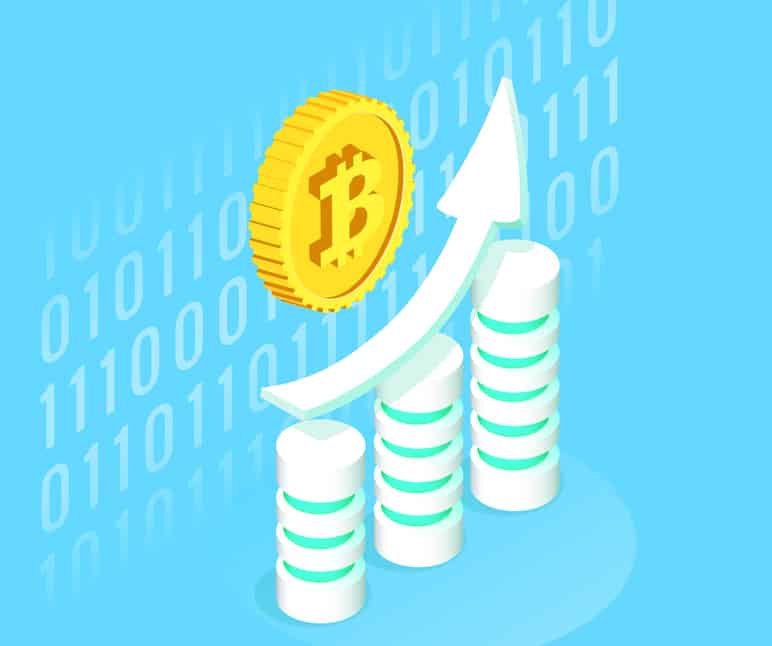
This is the same level of manipulation that brings to mind the time George Soros famously bet against the Bank of England in 1992 and made off with $1 billion in a single day — except that relied on coordinating with his hedge fund and other speculators to short sell the pound sterling. Elon Musk only needs to type out a single tweet to have the same impact on cryptocurrencies.
The Conclusion
A full decade after its invention, bitcoin is still a hot topic, with its value in 2021 the highest it’s ever been. Although the blockchain ensures a secure way to trade, cryptocurrencies are not without faults. We hope this guide helped you understand bitcoin and how it works a little bit better, and if you decide to dabble in the virtual currency, be sure to backup your bitcoin wallet.
If you’re craving for more information about bitcoin, its benefits, and how its traded, check out our beginner’s guide Crypto for Dummies.
What are your opinions on bitcoin? Do you trust the blockchain, or are you still crypto skeptical? Be sure to read our crypto exchange crash article to understand the future of decentralized finance. Let us know in the comments below and, as always, thank you for reading.
FAQ
Bitcoin works just like any other currency: you go to a place that accepts bitcoin, pay for your service or product and walk away with it. The difference is it uses blockchain technology to verify transactions to ensure they’re authentic and secure.
Yes, bitcoin is real money in most senses of the word. Although it’s not printed and doesn’t exist as cash, it’s as real as the money on your credit card.
Yes, there are bitcoin exchanges and other cryptocurrency exchanges that can convert your bitcoin to cash in a physical currency, like U.S. dollars (because physical bitcoins don’t exist). However, you can deposit bitcoin into digital wallets.
Bitcoin miners create more bitcoins, or earn bitcoins, by solving a series of complex equations. These equations are part of the blockchain process that authenticates bitcoin transactions. You create new bitcoins just by participating in the blockchain.
Bitcoin has many different cryptocurrency forks, and Bitcoin Cash is one of them, created in 2017 largely to resolve the scalability problem in bitcoin. They are two separate cryptocurrencies, but there are still many underlying similarities between them.
